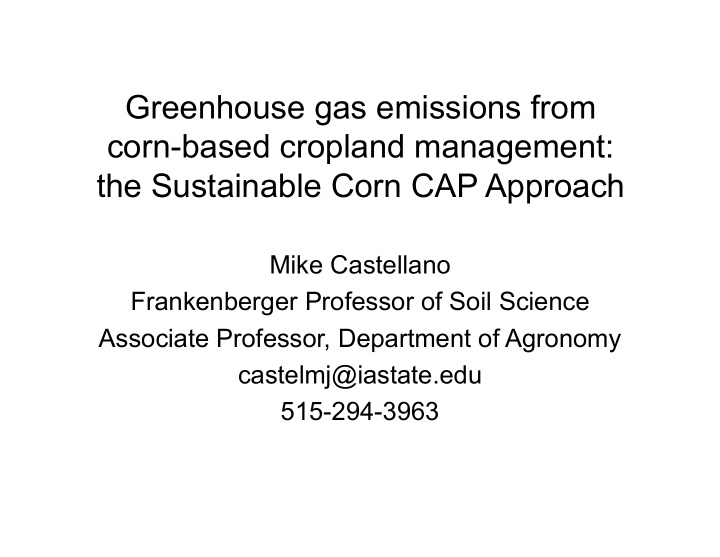



Greenhouse gas emissions from corn-based cropland management: the Sustainable Corn CAP Approach Mike Castellano Frankenberger Professor of Soil Science Associate Professor, Department of Agronomy castelmj@iastate.edu 515-294-3963
N 2 O from Agricultural Soil Management ~51% CH 4 from Rice Cultivation N 2 O from ~2% Manure Mgt. ~3% CH 4 from CH 4 from Manure Enteric Fermentation Management ~12% ~32% U.S. Agriculture Sector GHG on a CO 2 Eq. basis; EPA 2013 As a sector, agriculture accounts for ~8% of U.S. GHG on a CO 2 Eq. basis
Mitigation: Global Technical Potential
Mitigation: Global Economic Potential
Mitigation: Global Economic Potential
Measuring CO 2 , CH 4 and N 2 O
Gas Chromatography Photoacoustic Spectroscopy
Developing the methodology:
Marsden Farm Matt Liebman, Wallace Chair for Sustainable Agriculture
Corn N 2 O Emissions Soybean N 2 O Emissions 8 No Rye Cover Crop Rye Cover Crop 2011 kg N 2 O-N emitted ha -1 6 4 2 0 0 135 225 0 135 225 kg N ha -1 (to corn only) kg N ha -1 (to corn only) 0 = insufficient 135 = agronomic optimum 225 = excessive
• Cropland management is an economical source of GHG (N 2 O) mitigation. • Nitrous oxide emissions highly variable in space and time – need more methods that are easily adopted. • Nitrogen fertilizer management can play a significant role in N 2 O emissions mitigation. Mike Castellano 515-294-3963 castelmj@iastate.edu
Recommend
More recommend